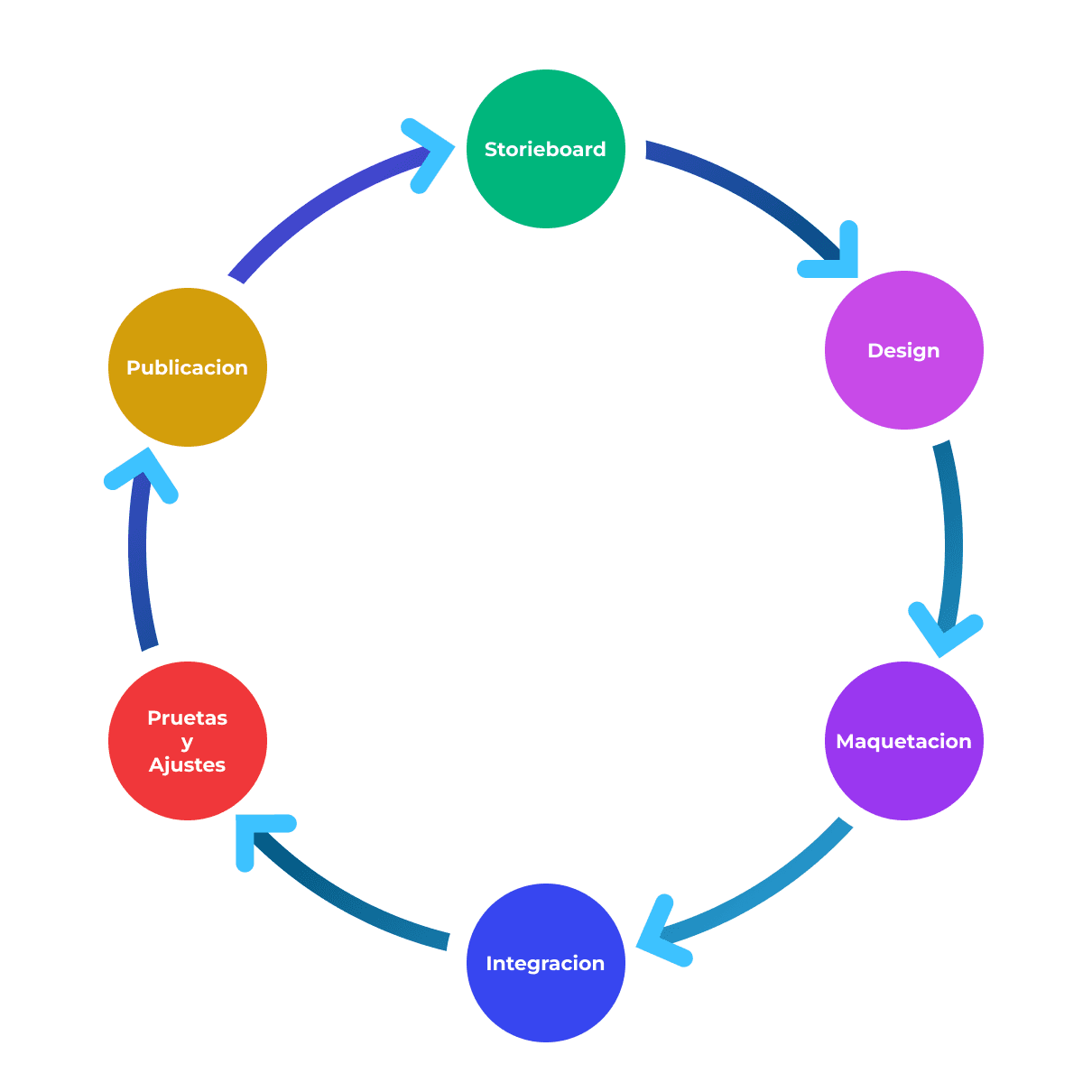
Every great app starts with an idea. That initial spark can come from a need, a business opportunity, or simply the desire to innovate. But how does that idea turn into a functional digital product? At Diproach, we follow a structured process that allows us to transform concepts into quality apps. From the initial sketch to publishing on platforms, each stage is crucial to ensure that the final result meets the client's expectations. Join us on this journey through the life cycle of a software project.
It all starts with a conversation. We sit down with the client to understand their vision, their needs, and the goals they are looking to achieve. In this phase, we create wireframes in tools like Figma or Motif, not focusing on the design, but on the structure and flows of the application. It is a kind of visual map that defines how the client will navigate within the product.
Recurring meetings at this stage are key to ensure that the client's idea is correctly translated into a functional structure. A well-crafted storyboard prevents misunderstandings and provides a solid foundation before moving on to the next step.
Once we have a clear structure, it is time to give the application personality. This is where the client chooses the colors, fonts, styles and animations that will define the visual identity of their product. This phase is crucial because appearance plays a determining role in the first impression of users.
A well-done design is not only aesthetic, but also improves the user experience (UX), ensuring that the application is intuitive, attractive and easy to navigate.
With the design approved, the Frontend team goes into action. Here, a static version of the application or website is developed, without real functionality or data, but with the visual structure already implemented. An executable file or web link is generated where the client can navigate and visualize their future product.
This step allows for design adjustments to be made before moving on to the integration stage, ensuring that the application looks and feels exactly as the client imagined.
Now it's time to bring everything to life. Databases, business logic, and interactive features are integrated, transforming the mockup into a functional product. At this stage, the client can begin to interact with the application and see how it responds to their actions.
It's an exciting time, as for the first time the project feels real. Initial tests are performed to verify that each element works correctly and that the application meets the objectives defined at the beginning of the process.
Before launch, we put the app through a series of exhaustive tests. We look for bugs, verify that everything works correctly on different devices and browsers, and make adjustments based on customer feedback.
This phase is essential to ensure that the user experience is smooth and seamless. It also allows us to detect and correct any problems before the app reaches the public.
Finally, the big day arrives: the app is ready to see the light of day. To do this, we ask the client for access to their Google Play, App Store or other platform accounts, and we take care of publishing it on the corresponding marketplaces.
With this, the app is now available to its target audience. But the work doesn't end here: continuous monitoring and updates are key to keeping the product relevant and functional over time.
Software development is not just about writing code. It is a collaborative process that involves planning, creativity, testing, and above all, communication with the client. At Diproach, each stage of this lifecycle is designed to ensure that the initial vision is transformed into a solid, functional, and successful product.
At the end of the day, what really motivates us is seeing how an abstract idea becomes a real tool that impacts users. And that is what makes each project unique and special.
If you have an idea and want to make it a reality, we are here to help you navigate this path. Let's talk and start building together!